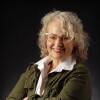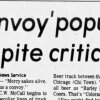Editor's note: This is part two in a two-part series on Linda Hazzard, a one-time Fergus Falls resident whose extreme fasting methods were linked to at least 14 deaths in the early 20th century. Find part one here .
Sheltered, wealthy and enamored with alternative medicine, Dorothea and Claire Williamson were the perfect marks for Linda Hazzard, an osteopath-turned-fasting fanatic.
ADVERTISEMENT
The British sisters, both in their 30s, had wealth and a life of leisure, which made it possible to travel whenever they wanted.
Orphaned at a young age, the siblings had grown especially close and came to view themselves as their own little family unit. Dorothea, also called Dora, saw herself as the mother figure, treating Claire, just four years younger, like a pampered child.
The British sisters, both in their 30s, had wealth and a life of leisure, which made it possible to travel whenever they wanted.
Orphaned at a young age, the siblings had grown especially close and came to view themselves as their own little family unit. Dorothea, also called Dora, saw herself as the mother figure, treating Claire, just four years younger, like a pampered child.
The Williamsons had another peculiarity. They were hypochondriacs. Although nothing was seriously wrong with them, they were sure they weren't well. Dora talked of swollen glands and rheumatic pains, while her younger sister was told by a physician that she had a dropped uterus.
While staying at a posh hotel in British Columbia, the sisters spotted an ad for Linda Hazzard’s book, “Fasting for the Cure of Disease.”
And so began their journey with Linda Hazzard...
Written by Tammy Swift
https://www.inforum.com/news/the-vault/hazzard-ous-healer-how-this-minnesota-womans-deadly-fasting-methods-finally-caught-up-with-her
The Williamsons had another peculiarity. They were hypochondriacs. Although nothing was seriously wrong with them, they were sure they weren't well. Dora talked of swollen glands and rheumatic pains, while her younger sister was told by a physician that she had a dropped uterus.
They began seeking answers in alternative treatments, giving up corset-wearing and meat-eating in their quest for wellness, wrote Bess Lovejoy in an article for Smithsonian Magazine.
While staying at a posh hotel in British Columbia, the sisters spotted an ad for Linda Hazzard’s book, “Fasting for the Cure of Disease.”
Hazzard had left her first husband behind in Fergus Falls to move to Minneapolis in 1898 and practice as an osteopath. She had become convinced that fasts were the only solution to perfect health. But her methods were so extreme that some patients died rather than improved. Perhaps in efforts to avoid repercussions in Minneapolis, she and second husband, Samuel Hazzard, had relocated to Washington to start Hazzard's Institute of Natural Therapeutics in the tiny town of Olalla.
The Williamsons knew little of the more unsavory details of Hazzard's past. When they received her book, they read it voraciously. Claire grew convinced that Hazzard’s Institute was the only solution to their various ills. She raved of Linda Hazzard’s “beautiful treatment.”
ADVERTISEMENT
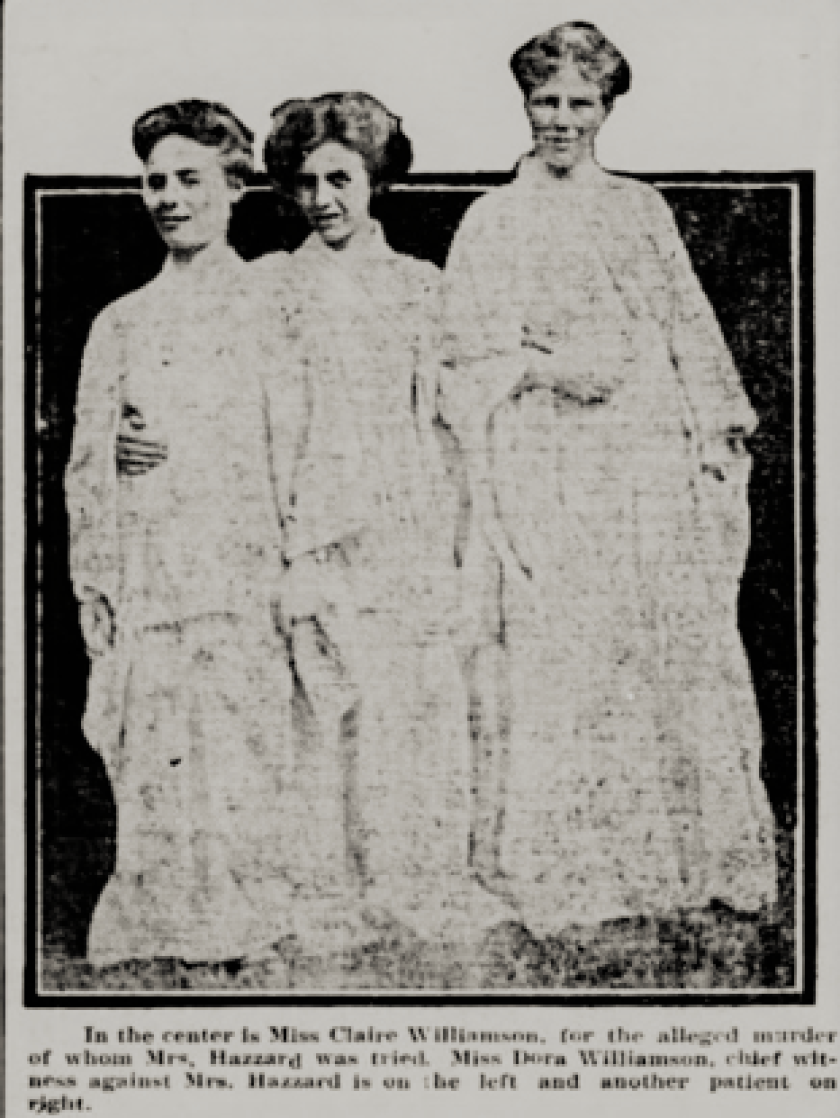
The sisters had formed a romantic vision of what it would be like to spend time in Hazzard’s country sanitarium. “They dreamed of horses grazing the fields, and vegetable broths made with produce fresh from nearby farms,” Lovejoy wrote in Smithsonian Magazine.
But when the sisters arrived in Seattle in February 1911, the sanitarium wasn’t ready.
Instead, they rented an apartment in Seattle, where Hazzard prescribed they eat only one cup of unseasoned tomato or asparagus broth, made from canned vegetables, twice daily. They also sometimes got tiny sips of orange juice.
Hazzard also pummeled them with violent osteopathic treatments and ordered their nurses to give them hours-long enemas. When the weakened women started fainting during the painful procedures, Hazzard ordered their nurses to install a canvas sling across the tub to catch them when they fell.
The Williamsons wasted down to 70 pounds. Their clothes hung on them as if they were little girls wearing adult women’s gowns. Their faces were so gaunt that when they smiled they resembled leering skulls, wrote Gregg Olsen, the author of "Starvation Heights," a book on Hazzard's case. They fainted constantly. They could no longer walk any significant distance, so had to be carried.
When Hazzard gleefully announced that the sanitarium was finally ready, the Williamsons were carried down the stairs to twin ambulances. Dora’s appearance was so disturbing that nurses swaddled her hands and head in bandages to deter curious onlookers, Olsen wrote.
Starved and stranded at ‘Starvation Heights’
If the sisters were even lucid enough to notice it, they likely were disappointed by the reality of Hazzard’s bucolic country sanitarium.
ADVERTISEMENT
It was a muddy, tree-shrouded, 40-acre tract, with a simple frame house where the Hazzards lived and five tiny, shoddily built cabins which Olsen described as barely sufficient to house chickens.
Even before the sisters had come to Olalla, Linda Hazzard had grown increasingly more intrusive about their financial affairs. Would they like to give her their jewels so she could lock them away for safe-keeping? Perhaps she could have her attorney draw up a codicil to their wills? In their current state, did they need some help managing their money and property?
She repeatedly told Claire that Dora could no longer take care of them, as she had lost her mind.
Brainwashed and weak from severe malnutrition, the Williamsons relented. They were all alone, with Hazzard keeping them apart so they couldn’t talk to each other. They had come to the fasting farm without telling relatives, for fear others would scoff at the sisters’ latest health fad. No one knew they were there.
Despite it all, they remained hypnotized by Linda Hazzard. Even if they’d been offered food, they wouldn’t eat a crumb without Dr. Hazzard’s OK.
“Your tongue is not clean,” the fasting fanatic told Dora. “You are not fit to take food yet. Your tongue will have to be clean and your breath must be sweet.”
It wasn’t until Claire sent a desperate cable halfway around the world to the sisters' childhood nurse, Australian-born Margaret Conway, that someone finally came to their aid. The cable contained just eight words: “Come SS Marama May 8th, first class, Claire.”
ADVERTISEMENT
The message was so cryptic that Conway knew something was wrong. She booked the first available berth on the Marama and headed to the Pacific Northwest.
Upon her arrival in Vancouver June 1, 1911, she was greeted by Samuel Hazzard, who was there to accompany her back to Olalla. When Conway asked how the girls were doing, Hazzard responded as if giving a weather report: “Miss Claire is dead and Miss Dora is helplessly insane. I am sorry.”
As Margaret Conway sat there and wept, Samuel Hazzard did his best to ignore her.
The day they rescued Dora
When the grieving governess was taken to a Seattle mortuary to view Claire's body, she was struck by how little it looked like the young woman she knew so well. Everything from the hair color to the corpse's hands looked wrong.
Later, prosecutors would surmise that the Hazzards had bribed the funeral home to switch out Claire's body with a healthier-looking one. They also believed that when Claire was on her death bed, the Hazzards had gotten her to sign a document which consented to cremation.
Linda Hazzard seemed anxious to share the results of an autopsy she'd taken the liberty to perform on the body first. She blamed Claire’s demise not on the fact she hadn’t eaten for 80 days, but on drugs administered to her in childhood, which Hazzard claimed had shrunk her internal organs and caused cirrhosis of the liver.
When Conway finally got to the institute to see Dora, she was appalled to find her mistress had dwindled down to 50 pounds. Her sitting bones protruded so much that she found it excruciating to sit.
ADVERTISEMENT
Conway begged Dora to leave the institute. But even after losing her beloved sister, Dora still seemed to believe in Hazzard. She refused.
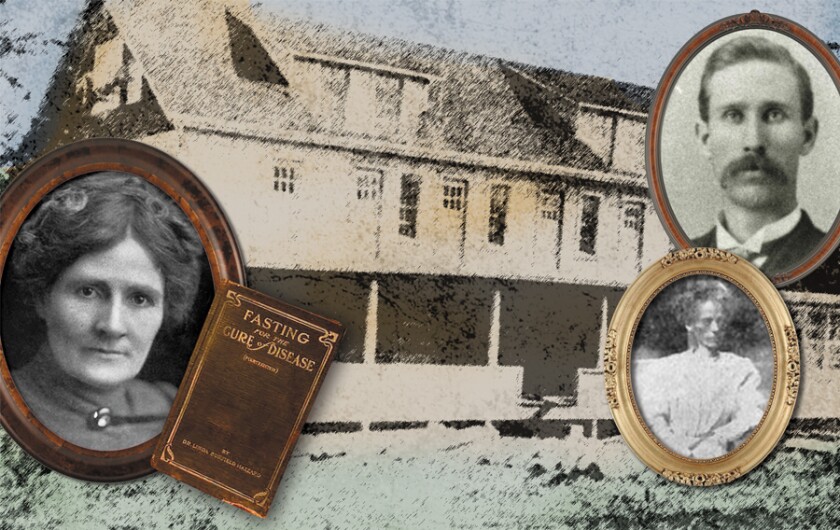
Conway felt she could only do so much as a servant from a class-conscious background, Olsen wrote. The nanny did what she could — sneaking rice and cream into the starving woman’s broth in efforts to give her nutrition.
However, she knew Dora would die soon if someone with clout didn’t intervene. One day, after the Hazzards had left the institute to catch a boat, Conway raced to the nearest store and sent a cable to Dora’s uncle, John Herbert, who lived in Portland.
Horrified, he hurried to free his niece. He haggled with Hazzard for hours before grudgingly paying the doctor nearly a thousand dollars to secure his niece’s freedom. He and Conway also discovered Hazzard had made herself executor of Claire’s estate, as well as Dora’s guardian for life. Dora had also signed over power of attorney to Samuel Hazzard.
The Hazzards helped themselves to Claire’s wardrobe of expensive silk dresses as well as $6,000 worth of the sisters’ diamonds and other precious gems.
Linda Hazzard even wore one of Claire’s dressing gowns around the house, in full view of Dora and her former nanny.
Imprisoned yet unrepentant
If not for the intervention of British authorities, Linda Hazzard might have walked free.
ADVERTISEMENT
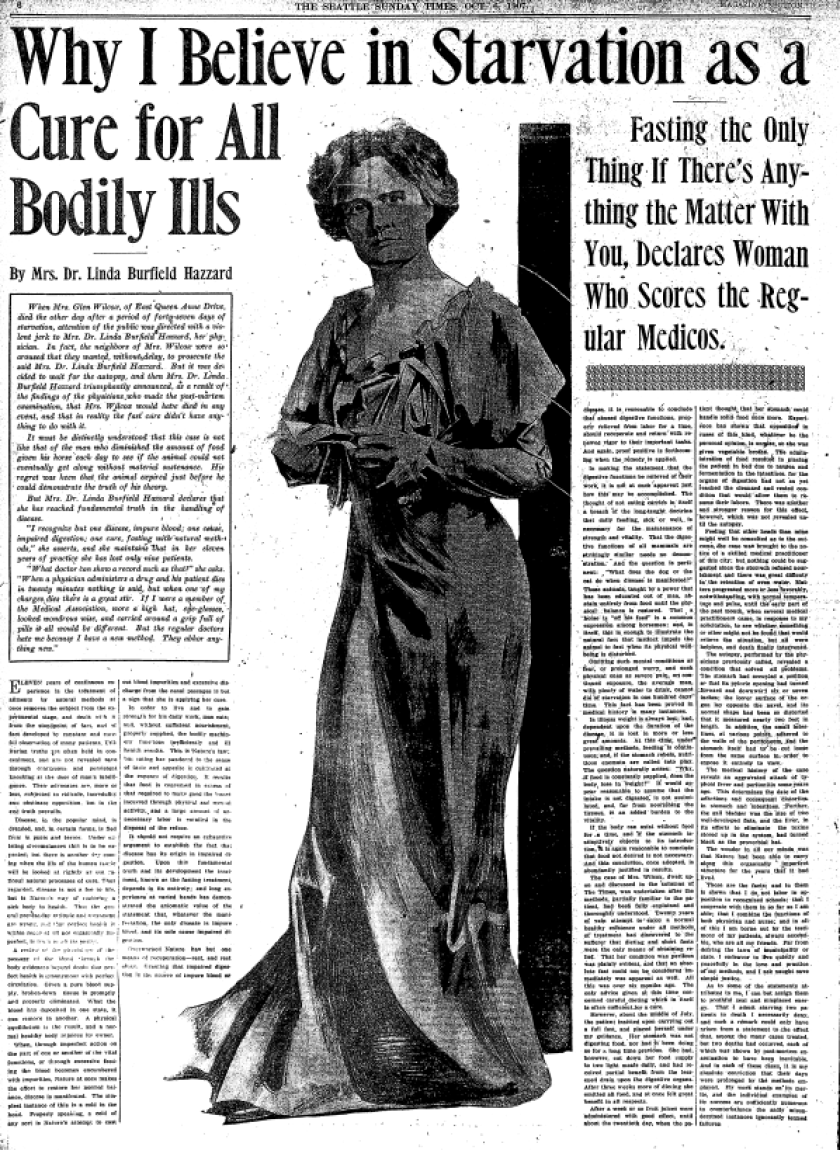
C.E. Lucien Agassiz, a British vice counsel in Tacoma, took an interest in what had happened to the British sisters. He was able to free Dora from guardianship and ultimately instigated a court case against Hazzard.
As Agassiz and John Herbert investigated the sanitarium, they found a trail of wealthy patients who had died under Hazzard’s care. Some signed over large sections of their estates to the Hazzards. One of them, a former state legislator named L.E. Rader, owned the land on which her sanitarium was built. Rader died in May 1911 after dwindling down to under 100 pounds on his 5-foot, 11-inch frame. While still alive, Rader had been moved to a secret location before authorities could question him, according to Smithsonian Magazine.
Another British citizen, John “Ivan” Flux, had come to America to buy a ranch, but died with just $70 in his name after the Hazzard "treatment." A New Zealand man reportedly shot himself while under Hazzard’s care.
On Aug. 15, 1911, Kitsap County authorities arrested the fasting specialist on charges of first-degree murder for Claire's death. That January, spectators crammed into the county courthouse in Port Orchard to hear servants and nurses testify about the brutality endured by the Williamsons. Prosecutors also highlighted the “financial starvation” that had depleted the Williamsons’ fortune.
As far as Linda Hazzard was concerned, the trial was an attack on her position as a successful woman who dared to practice alternative methods in a male-dominated field.
But jurors were unmoved. They deliberated for only a short while before returning with a guilty verdict of manslaughter. Hazzard was sentenced to two to 20 years of hard labor at the penitentiary in Walla Walla, and her medical license was revoked.
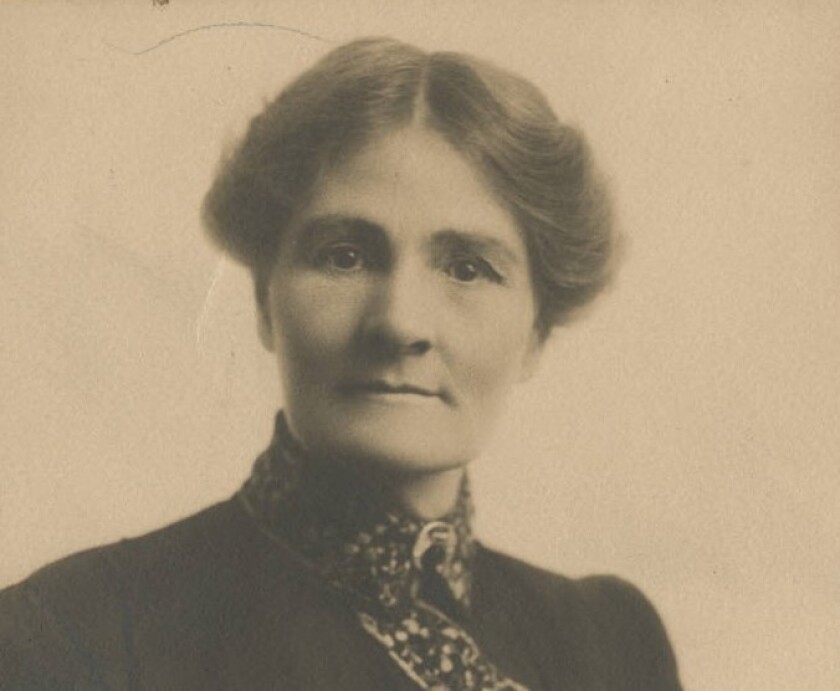
Letters asking for Hazzard’s release followed. That included a New Zealand petition bearing 121 names in which signers implored the state to “look upon Dr. Hazzard’s methods of treatment as a boon to suffering humanity.”
An appeal was made to the Supreme Court, but rejected.
After a year and a half in prison, Hazzard was pardoned by Gov. Ernest Lister with the stipulation that she leave America, according to Washington State Archives. She and Samuel set sail for New Zealand, where she worked as a physician, dietitian and osteopath and published another book. They did so well overseas that they were able to return to Olalla in 1920 and build an even greater sanitarium, with three floors, a long porch that spanned the front of the building and a grand staircase. Since Hazzard was no longer licensed to practice medicine, she called the sanitarium a "School of Health." and her patients "students."
She continued to skirmish with the law — once for practicing medicine without a license while starving a Washington farmer to death. She was fined $100.
The school burned down in 1935, under what some thought were suspicious circumstances. Linda Burfield Hazzard died three years later at age 70, while attempting a fast cure on herself.


